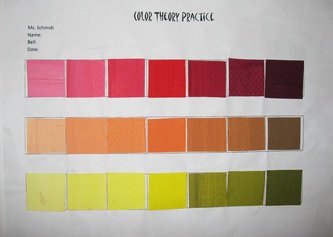Seniors: At the beginning of the week, I spent two days working with students on observational techniques and facial feature placement. Students completed worksheets about themselves. The students are creating a split self-portrait where they are to present their current reality and fantasy and the struggle to find balance between the two. The realistic portion of the assignment was to be drawn and shaded using graphite. The fantasy portion was to be painted in one chosen color scheme which represents and reflects on themselves. The final element was to write about themselves on a transparency paper and tape this over their face to include an element of concealing/revealing themselves. This project turned out to be insightful not only for the students but both myself and my mentor teacher as we were able to discover more about our students through their drawings, paintings and writings.
Adaptations/Modifications: For students who required a modified lesson, I taught first about the pop artist Andy Warhol. We spent a day looking at his work, inspiration and techniques as they would be completing a self-portrait with a similar color scheme process. After learning about the artist, I presented an example of screen separations on transparency paper to show his concept of process and layering.
Students completed a self-portrait in the style of Andy Warhol. This project was successful and students had a flex assignment for those who finished early without having them move on to a new project. This was another layer to their final project.
Arty On!

 RSS Feed
RSS Feed